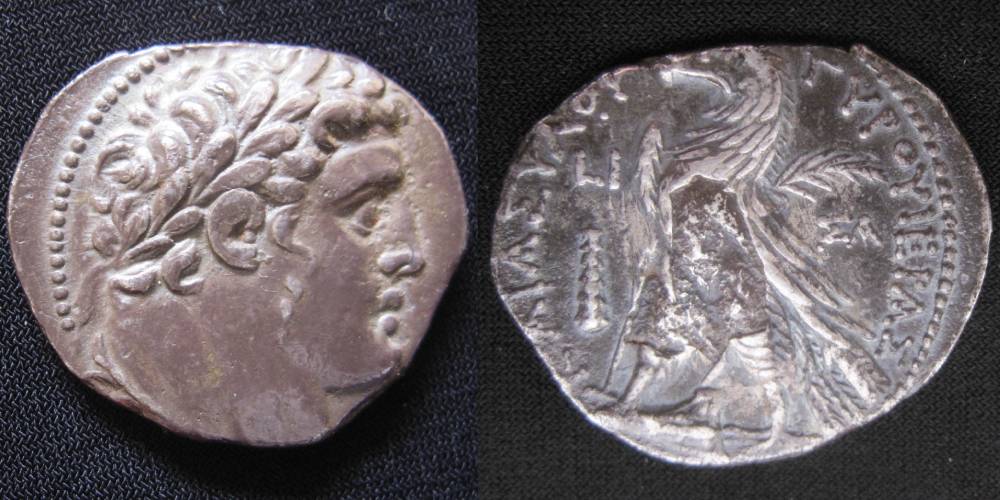Description
Phoenicia, Tyre AR Shekel. Dated CY 10 = 117/6 BC.13.99 g, 28mm,
Laureate bust of Melkart to right. Rev: ΤΥPΟΥ ΙΕΡΑ[Σ] ΚΑΙ ΑΣΥΛΟΥ,
eagle standing to left on prow, palm behind; LI (date) above club to left,
ZA monogram to right, Phoenician letter beth between legs.
Rouvier 1977; DCA Tyre 23; DCA 919; HGC 10, 357.
Good Very Fine with a deep cabinet patina and a metal flaw on the body of the eagle
Originally, the silver shekels, both the full and half shekels, were produced in the city of Tyre. By the half century before the birth of Christ, they had become the predominant coin in the Judaeo-Phoenician area of the world. After Rome occupied Israel, Israel was no longer authorized to mint their own currency. Since the Jewish Talmud required the Temple tax to be paid with a coin of high purity of silver, the Tyre shekels and half shekels were the only acceptable coins available that met Jewish law requirement.
Judas’ 30 Pieces of Silver – Matthew 26:14-15 “Then one of the 12, called Judas Iscariot, went unto the chief priests, and said unto them, ‘What will ye give me, and I will deliver him unto you?’ And they covenanted with him for 30 pieces of silver.” — Matthew 26:14-15. Shekels of Tyre were the only currency accepted at the Jerusalem Temple and are the most likely coinage with which Judas was paid for the betrayal of Christ. The silver shekels and half-shekels of Tyre were minted from c. 126 B.C. until c. 57 A.D. Any coin minted prior to 34 A.D. may have circulated in Jerusalem during Jesus’ lifetime.
